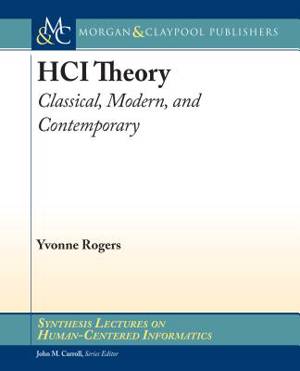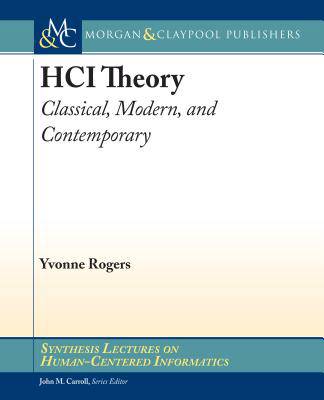
- Afhalen na 1 uur in een winkel met voorraad
- Gratis thuislevering in België vanaf € 30
- Ruim aanbod met 7 miljoen producten
- Afhalen na 1 uur in een winkel met voorraad
- Gratis thuislevering in België vanaf € 30
- Ruim aanbod met 7 miljoen producten
Zoeken
Omschrijving
Theory is the bedrock of many sciences, providing a rigorous methods to advance knowledge through testing and falsifying hypotheses about observable phenomena. To begin with, the nascent field of HCI followed suit, borrowing theories from cognitive science to test theories about user performance at the interface. But HCI has emerged as an eclectic interdiscipline rathern than a well-defined science. It now covers all aspects of human life, from birth to bereavement, through all manner of computing, from device ecologies to nanotechnology. It comes as no surprise that the role of theory in HCI has also greatly expanded from the early days of scientific testing to include other functions such as describing, explaining, and critiquing, and also as the basis for generating new designs. This book charts the theoretical developments in HCI, both past and present, reflecting on how they have shaped the field. It explores both the rhetoric and the reality; how theories have been conceptualized, what was promised, how they have been used, and which has made the most impact in the field -- and the reasons for this. Finally, it looks to the future and asks whether theory will continue to have a role, and if so, what this might be.
Specificaties
Betrokkenen
- Auteur(s):
- Uitgeverij:
Inhoud
- Aantal bladzijden:
- 129
- Taal:
- Engels
- Reeks:
Eigenschappen
- Productcode (EAN):
- 9781681732299
- Verschijningsdatum:
- 28/05/2012
- Uitvoering:
- Hardcover
- Formaat:
- Genaaid
- Afmetingen:
- 190 mm x 235 mm
- Gewicht:
- 444 g

Alleen bij Standaard Boekhandel
+ 156 punten op je klantenkaart van Standaard Boekhandel
Beoordelingen
We publiceren alleen reviews die voldoen aan de voorwaarden voor reviews. Bekijk onze voorwaarden voor reviews.











